|
Retire Early
Lifestyle
Retirement; like your parents, but way cooler

|
In 1991 Billy and Akaisha Kaderli retired at the age
of 38. Now, into their 4th decade of this
financially independent lifestyle, they invite you
to take advantage of their wisdom and experience. |
|
Saint
Agatha's
Cathedral and the Cathedral Cafe, Catania, Sicily
Billy and Akaisha Kaderli
Currency Converter
Dominating Piazza del Duomo,
the Cathedral of Saint Agatha stands as a testament to Catania's enduring
spirit. Sharing the square with the iconic Amenano Fountain, this majestic
building has been destroyed and rebuilt several times due to earthquakes and
eruptions of nearby Mount Etna.
With each earthquake the
Cathedral was renewed and erected stronger to become a symbol of the city's
resilience.
It was originally placed on
the ruins of the ancient Roman Achillean Baths.
Since it wasn't far from
our
apartment we had to check it out.
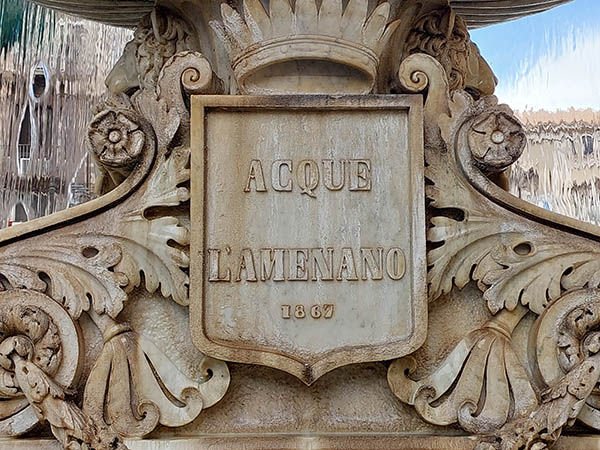
Fountain celebrating the Amenano River
The Amenano is an underground river that
flows through the city of Catania.
While the river itself is
largely hidden from view, its presence is marked by the Amenano Fountain, a
beautiful marble sculpture in the spacious Piazza Duomo.
The fountain represents the river with its constant, flowing
waters being a feature of the city's central square.
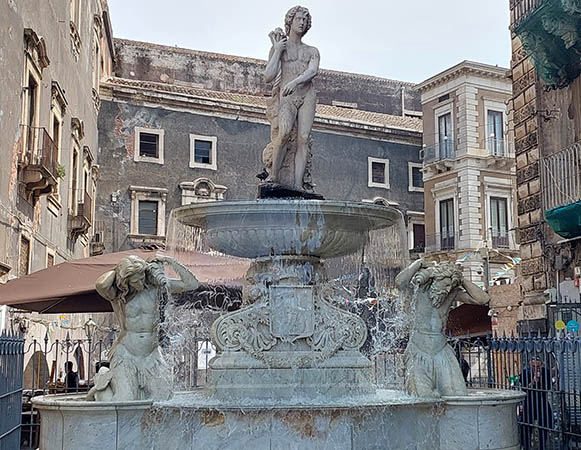
Amenano Fountain
Stepping back a bit from this 19th-century
carved masterpiece you are able to appreciate the white marble and the intricate
figures.
This fountain is filled with water that flows
from the Amenano River.
The Greeks, who founded Catania as Katanč,
recognized the river as a
deity in its own right.
Over the centuries, Catania has faced numerous
threats, most notably from
Mt. Etna's volcanic eruptions. But the Amenano, despite being buried
underground,
consistently reappeared. And now it is viewed as a River of
Resilience.
This characteristic has earned it a place in the hearts of Catanesi as a symbol of hope and renewal.
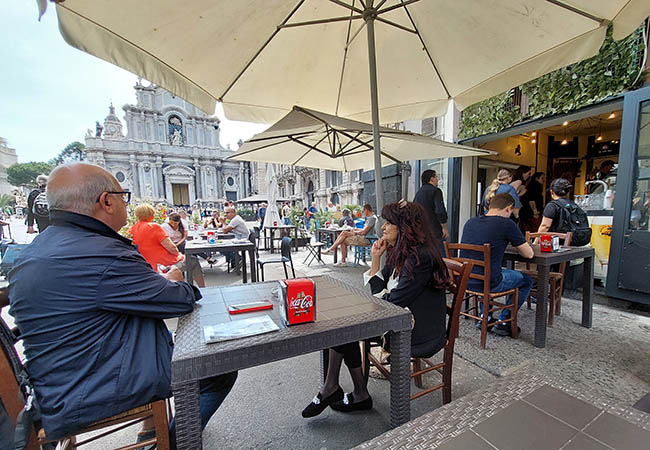
Cafe in front of St. Agatha Cathedral
We sat at this cafe, having our morning
cappuccino and enjoying watching people and the foot traffic of this busy
piazza.
On one of the side streets from this piazza
is where we booked
our tour
bus tickets to go up the eastern coast of Sicily. We
saw the
Norman Castle and met
the Professor on our journey.
The Amenano Fountain is to the right, just
outside the photo.
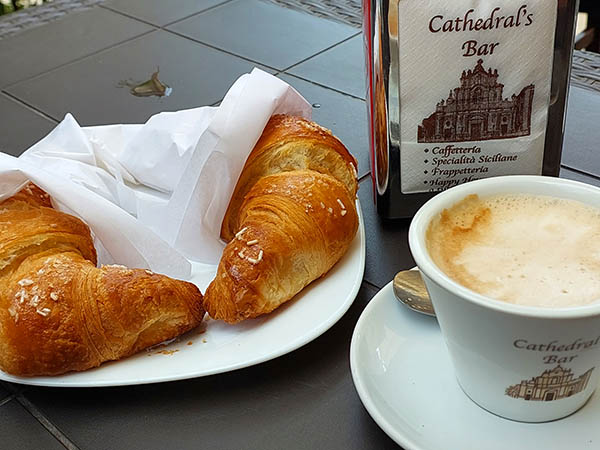
Cathedral's Bar
What a way to begin the morning!
Surrounded by beauty and intriguing humanity with tasty
pastry and great coffee.
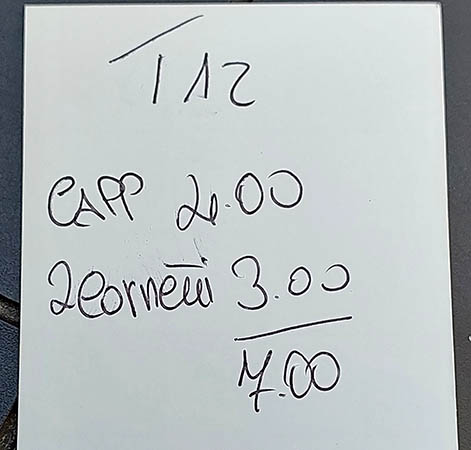
Our bill for the 2 of us
Our bill for these yummies came to $7Euros,
not quite $8USD.

Basilica of St. Agatha
This Basilica is made of white marble and the
dark lava stone - a common building material in Catania - as a contrast. The
lava stone offers excellent insulation, keeping buildings cool in summer and
warm in winter.
Dedicated to the patron saint of Catania, St.
Agatha, this Roman Catholic church also has a former Benedictine convent to the
right.
The building just behind the cathedral
is the Palazzo degli Elefanti and is the seat of the city government of Catania.
The building is named after the elephant
fountain in front of it, a nod to the Arab influence Catania has experienced
over the centuries.
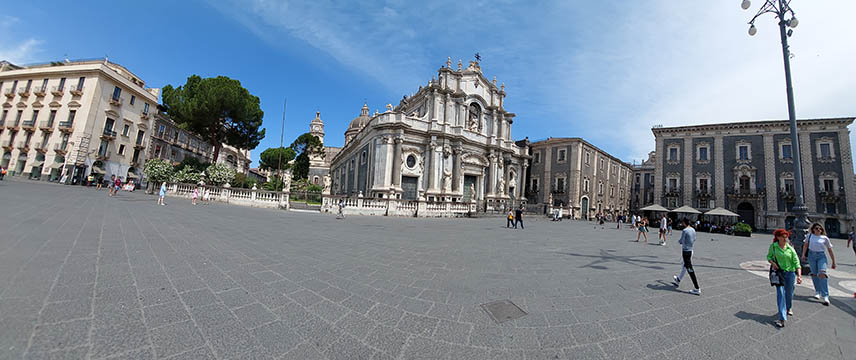
The wider view of the Cathedral Piazza
This large piazza probably had Roman origins
as an open space. Beneath the piazza are ancient Roman baths that were covered
up in the following centuries.
The piazza as we know it today, took shape
after one of the many earthquakes that rattled the city.
While the original cathedral was built in the
Norman period, it was almost
entirely destroyed by the catastrophic earthquake of 1693.
This wide open area is a vibrant
center for both locals and tourists, hosting markets, festivals, and everyday
life.
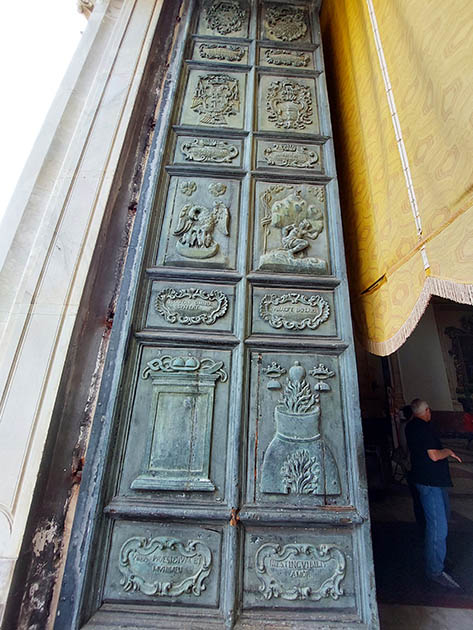
Carved Cathedral doors
These huge, beautifully carved entrance doors
to the Cathedral show the skill of their makers.
Notice the size of the door compared to the man standing next to it!
The Cathedral's namesake is
Saint Agatha who was a young Christian virgin from Catania. She refused the advances
of a Roman governor, and as punishment, she was tortured and martyred in the 3rd
century AD.
As
the patron saint of Catania she is revered for her courage and faith.
St. Agatha is also the patron saint of breast cancer patients and rape victims.
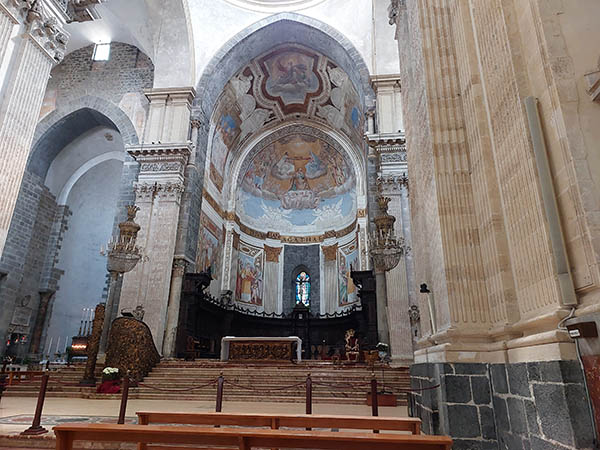
Interior of Cathedral
The interior of the Cathedral is spacious and light-filled.
There are many stunning marble sculptures, ornate
side chapels, and beautiful mosaics.
The Cathedral is also home to the relics of Saint Agatha,
which are paraded out on her feast day each February.
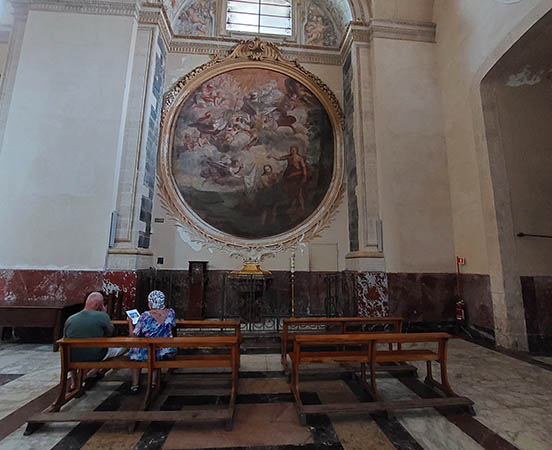
A side fresco
Here you see one of the many painted frescos
and side worship areas.
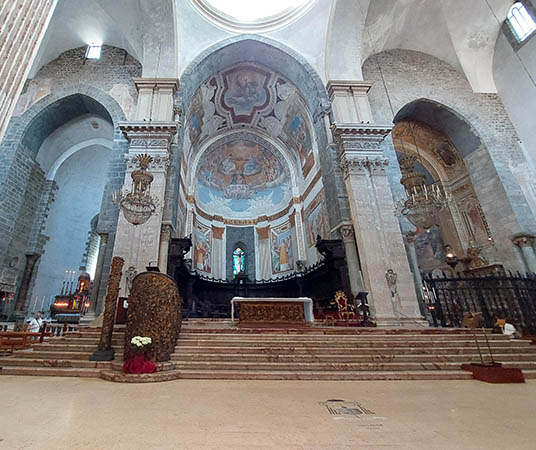
Front view of the center altar
Gold, marble, ornate carvings, frescos,
chandeliers all elevate the minds of the faithful by their beauty.
All of this bring about a calm place to pray.
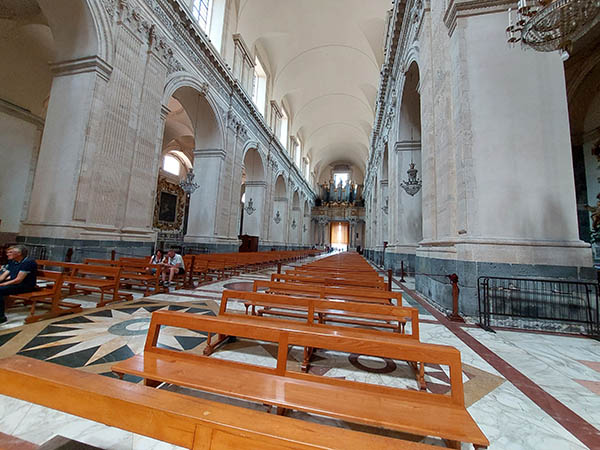
Pews in the Cathedral
This is the view from the main altar looking
towards the entrance of the Cathedral.
These pews look to be movable, something
convenient in times where celebrations require different spacing.
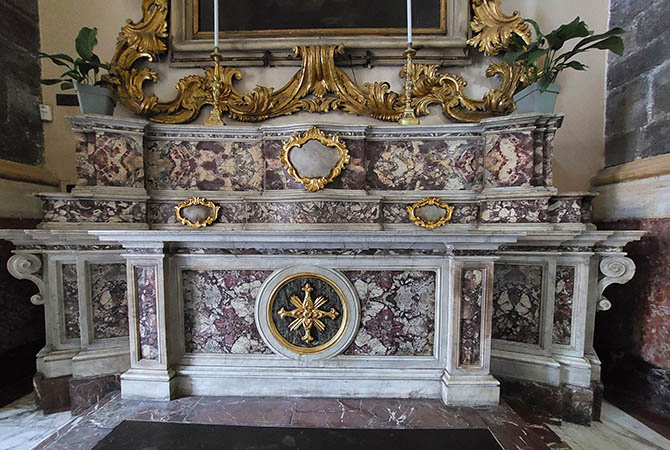
Ornate side altar
This side altar, dedicated to Saint Agatha,
is made of white and pink marble, with gold leaf accents.
The altar is located in the right transept of
the cathedral, and it was built in the 18th century. It is a typical example of
Sicilian Baroque architecture, richly decorated and ornately carved, with a
strong emphasis on the use of color and light.
It's quite beautiful.
Would we recommend a visit?
YES!
__________
The Cathedral of St. Agatha
Located in Piazza del Duomo, about 1.4 kilometers
away from the main railway station of the city, Catania Stazione Centrale.
The
closest bus stop is in Via Vittorio Emanuele 192, located near the cathedral, on
bus Lines 830, 902, and 932.



Retire
Early Lifestyle appeals to a different
kind of person – the person who prizes their
independence, values their time, and who doesn’t
want to mindlessly follow the crowd.
HOME
Book Store
Retire Early Lifestyle Blog
About Billy & Akaisha
Kaderli
Press
Contact
20 Questions
Preferred
Links
Retirement
Country Info
Retiree
Interviews
Commentary
REL
Videos
|